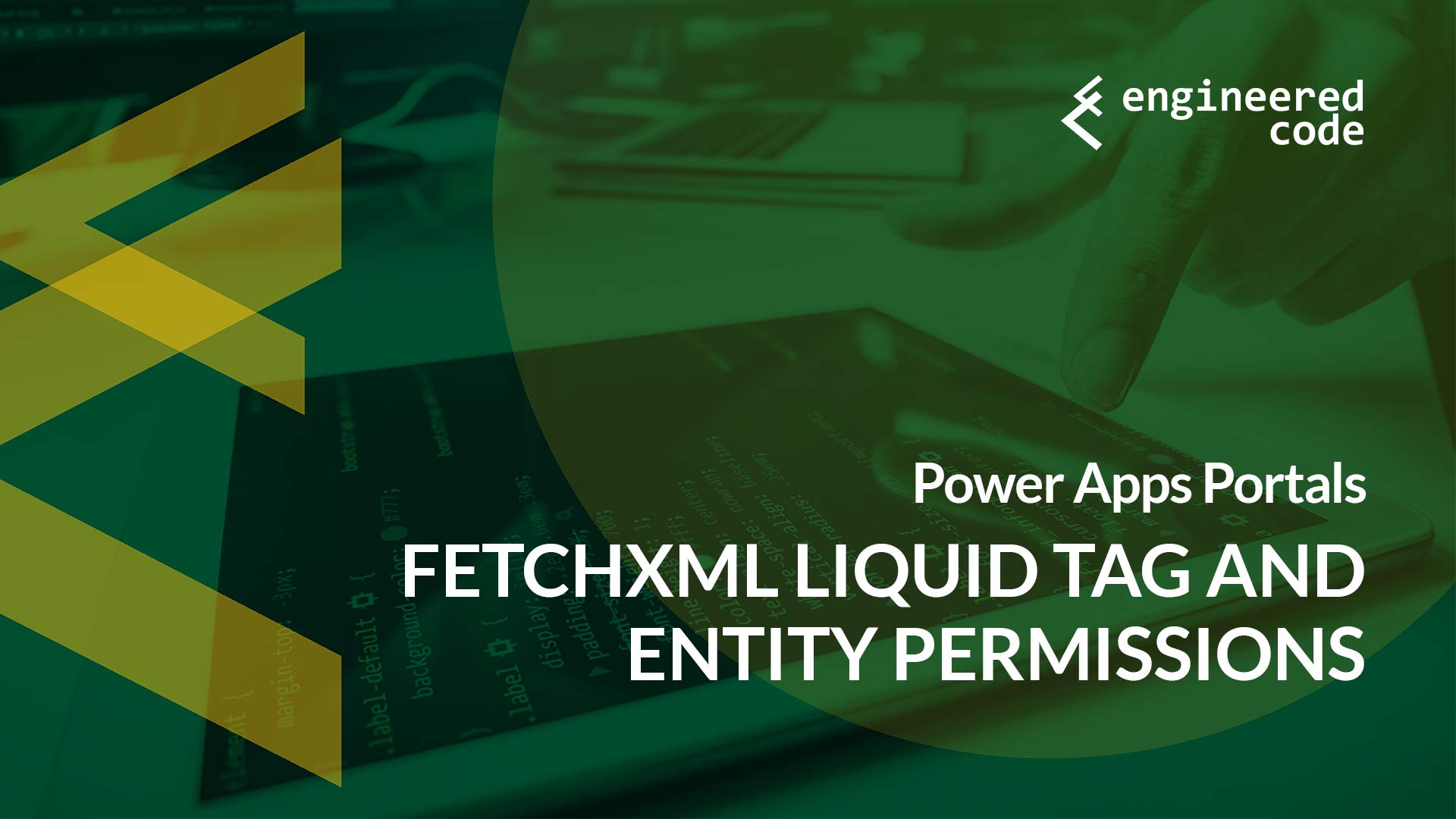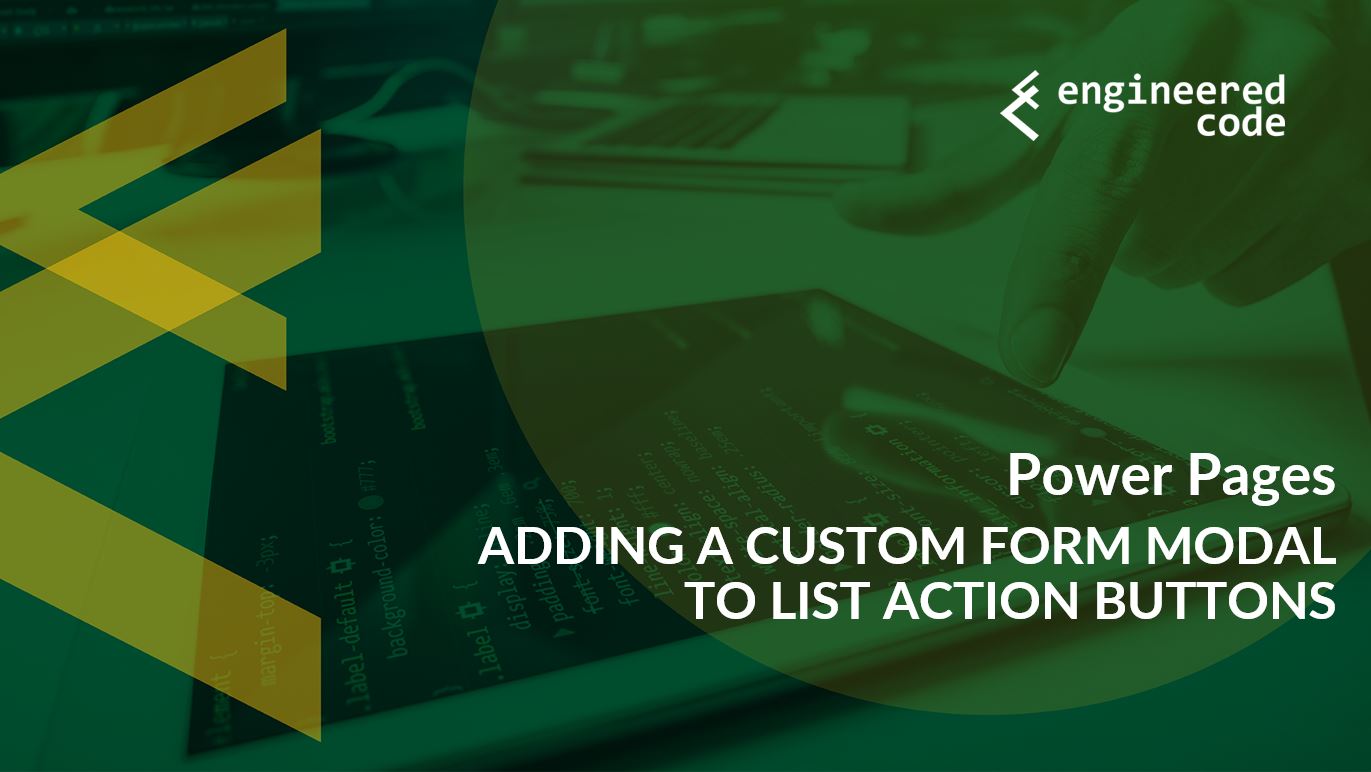Category: Microsoft Flow

Power Pages: Power Automate List Action Button
December 30, 2024 3 Min.To ReadA member of the Power Pages community recently reached out to me asking about how you can know which contact triggered a classic workflow when added via the list action buttons. Unfortunately, the answer is: you can’t. You can, however, know which contact triggered a Power Automate flow. But as of now, you can’t add a Power Automate action button to a list via configuration – you need a bit of JavaScript to create the action button and invoke a Power Automate flow via the Power Pages Web API. In this post, I’ll look at how to do exactly that.

The Journey to the Launch of ecLearn, an LMS for Dataverse
October 18, 2023 2 Min.To ReadIf you follow us on social media, hopefully you’ve seen that we at Engineered Code shared some exciting news this week. We announced ecLearn, a learning management system (LMS) built on top of Microsoft Dataverse. In this blog post I’m going to give you a bit of a glimpse into the ecLearn journey.

PowerApps Portals: Data Upload Using SharePoint and Flow
October 10, 2019 2 Min.To ReadA question that’s popped up a few times on the community forums is around a solution that would allow PowerApps Portals users to upload an Excel or CSV file and have records created in the CDS/Dynamics database. Some others have suggested some answers, so I’d thought I’d summarize, plus offer another possible solution.

Using Microsoft Flow and Uptime Robot to Keep Adxstudio Portals Site Alive
July 6, 2018 2 Min.To ReadWe have an Adxstduio Portals v7 site that’s been causing us grief recently by getting stuck in an error state. The error state is easily resolved by clearing the cache, but this solution required manual intervention. Since the site is currently being upgraded to v8, we didn’t want to invest too much into finding the root cause – it was easier to just kill the cache when the site went down. But what was even easier was using Microsoft Flow and Uptime Robot to do the job for us.
Popular Posts

Power Pages: When to Use (and When Not To)
March 6, 2023 5 Min.To ReadThe growth of Power Pages has been an amazing story. Since being acquired by Microsoft in 2015, the product has gone from a niche add-on for Dynamics 365 Customer Engagement to a full-fledged product in the Power Platform. The visibility that comes with getting equal billing to other Power Platform products like Power BI, Power Apps, and Power Automate means that new people are discovering Power Pages all of the time. However, as with any software product, Power Pages isn’t always a fit, even if your project fall under the category of low code web application development platforms. In this post, I will share what I look for when trying to determine if Power Pages is a fit for a given project.

PowerApps Portals: Liquid and JavaScript – Better Together!
October 31, 2019 4 Min.To ReadPowerApps Portals offers two primary languages for customization: JavaScript and Liquid. This leads to confusion as to which technology should be used when – I’ll try to clear up some of that confusion in this blog post, as well as demonstrate that is many cases, the best option is a combination of the two.

Power Apps Portals: fetchxml Liquid Tag and Entity Permissions
January 16, 2020 3 Min.To ReadThe fetchxml Liquid tag is arguably the most powerful Liquid tag in Power Apps Portals – it allows you to meet complex requirements for the display of data. But, if you combine it with a complex Entity Permissions model, you could find yourself getting unexpected errors. In this post I’ll cover what can cause those errors, and how to work around them.

Power Pages: Adding a Custom Form Modal to List Action Buttons
December 8, 2023 6 Min.To ReadRecently there was a comment on my blog Power Apps Portals: Related Entity as Source of Next Web Form Step about adding a custom Edit button to a list or subgrid. In this case, rather than editing the main row in the table, they wanted to edit a row that was related to the main row. If you want the edit form to pop up in a modal, it requires a bit of JavaScript. In this post, I’ll go through what you need to do in order to achieve this functionality.
